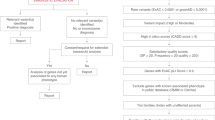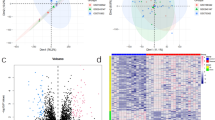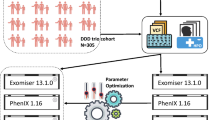Abstract
We report on a strategy for the identification of candidate genes for multiple malformation syndromes using expression data available in public databases. The basis for this pilot study was the assumption that, for a multiple malformation syndrome, the expression pattern of the causative gene should at least cover the organs or tissues affected by the syndrome. Twenty malformation syndromes were selected from the OMIM and defined by three to five main symptoms. These key symptoms were translated into anatomical terms that were used to query the Gene eXpression Database (GXD). The searches covered 65% of the database and yielded an average of 16 candidate genes per syndrome. Of these, 23% were ubiquitously expressed or housekeeping genes. Further database evaluation of these potential candidate genes was based on positional information and on information from mouse knockouts. In a first experiment, the correct gene was identified as a candidate in four of seven syndromes for which the causative gene is already known. In addition, this strategy identified new candidate genes for disorders for which the genetic basis is unknown. We identified candidate genes for the Walker-Warburg, DOOR, C, scalp–ear–nipple and oculocerebral hypopigmentation syndromes. Our results suggest that it may ultimately be feasible to identify disease genes by probing gene expression databases with simple syndrome descriptions.
Similar content being viewed by others
Log in or create a free account to read this content
Gain free access to this article, as well as selected content from this journal and more on nature.com
or
Author information
Authors and Affiliations
Corresponding author
Rights and permissions
About this article
Cite this article
Steensel, M., Celli, J., van Bokhoven, J. et al. Probing the Gene eXpression Database for candidate genes. Eur J Hum Genet 7, 910–919 (1999). https://doi.org/10.1038/sj.ejhg.5200405
Received:
Revised:
Accepted:
Published:
Issue date:
DOI: https://doi.org/10.1038/sj.ejhg.5200405
Keywords
This article is cited by
-
In-silico QTL mapping of postpubertal mammary ductal development in the mouse uncovers potential human breast cancer risk loci
Mammalian Genome (2015)
-
A new web-based data mining tool for the identification of candidate genes for human genetic disorders
European Journal of Human Genetics (2003)



